Five
SPECIAL MOVEMENTS

The B&O, passing directly through Washington, D.C., attracted patronage from many U.S. presidents and presidential candidates. Here Theodore Roosevelt campaigns on the Progressive Party “Bull Moose” ticket in Point Pleasant. It is Thursday, April 4, 1912, and TR, a former Republican, already has served as president from 1901 to 1909. (Gordon C. Jackson/Bob Withers collection.)
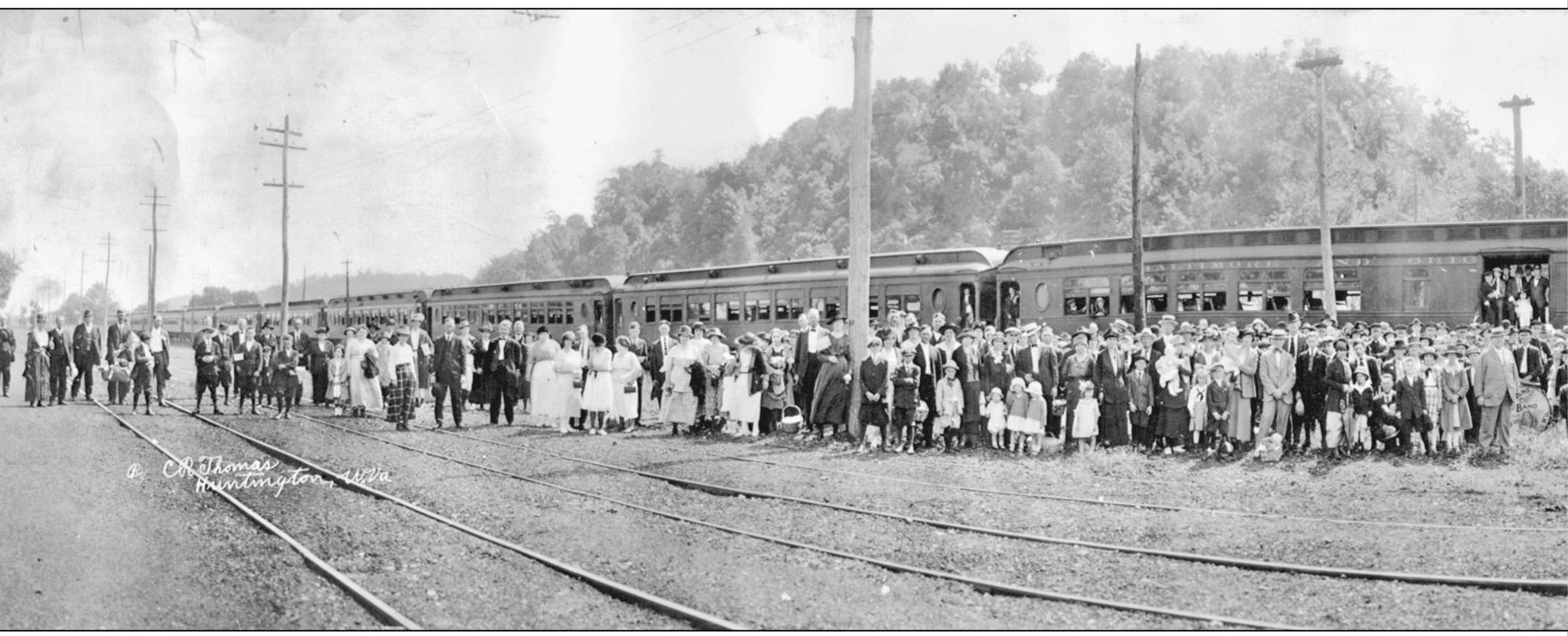
An excursion sponsored for employees, retirees, and the public by the Baltimore and Ohio Veterans Association in Parkersburg has just arrived for an annual outing at Camden Park, just west of Huntington, on Sunday, September 12, 1920. A surviving brochure from an identical trip in 1950 advertises stops in Ravenswood, Millwood, Mason City, and Point Pleasant for round-trip fares as low as $1.75. Tracks in the foreground are owned by the Ohio Valley Electric Railway Company; in fact, it was the streetcar line that built the 14-acre amusement park as a way to drum up patronage. (C. R. Thomas Studio/Paul Fulks collection.)

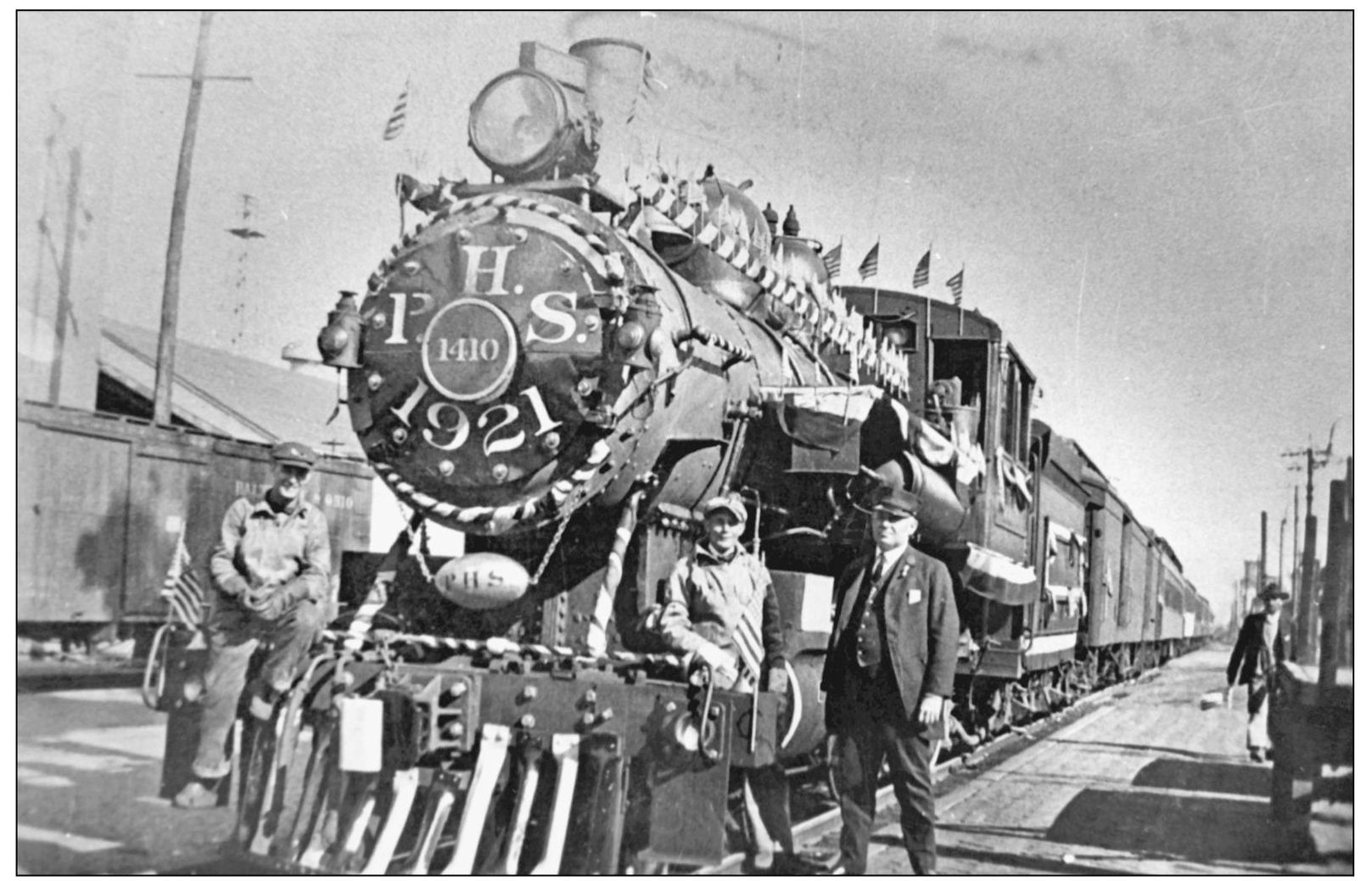
Posing in front of a gaily decorated excursion in 1921 are, from left to right, engineer John Matheny, fireman Roscoe Roush, and conductor Charles Riggs. The train has just brought hundreds of Parkersburg High School students and chaperones to Huntington for a football game against Huntington High School. This is the first such special sponsored by the Parkersburg Lions Club; the custom will continue another 40 years. (Charles S. Ruddell/Bob Withers collection.)
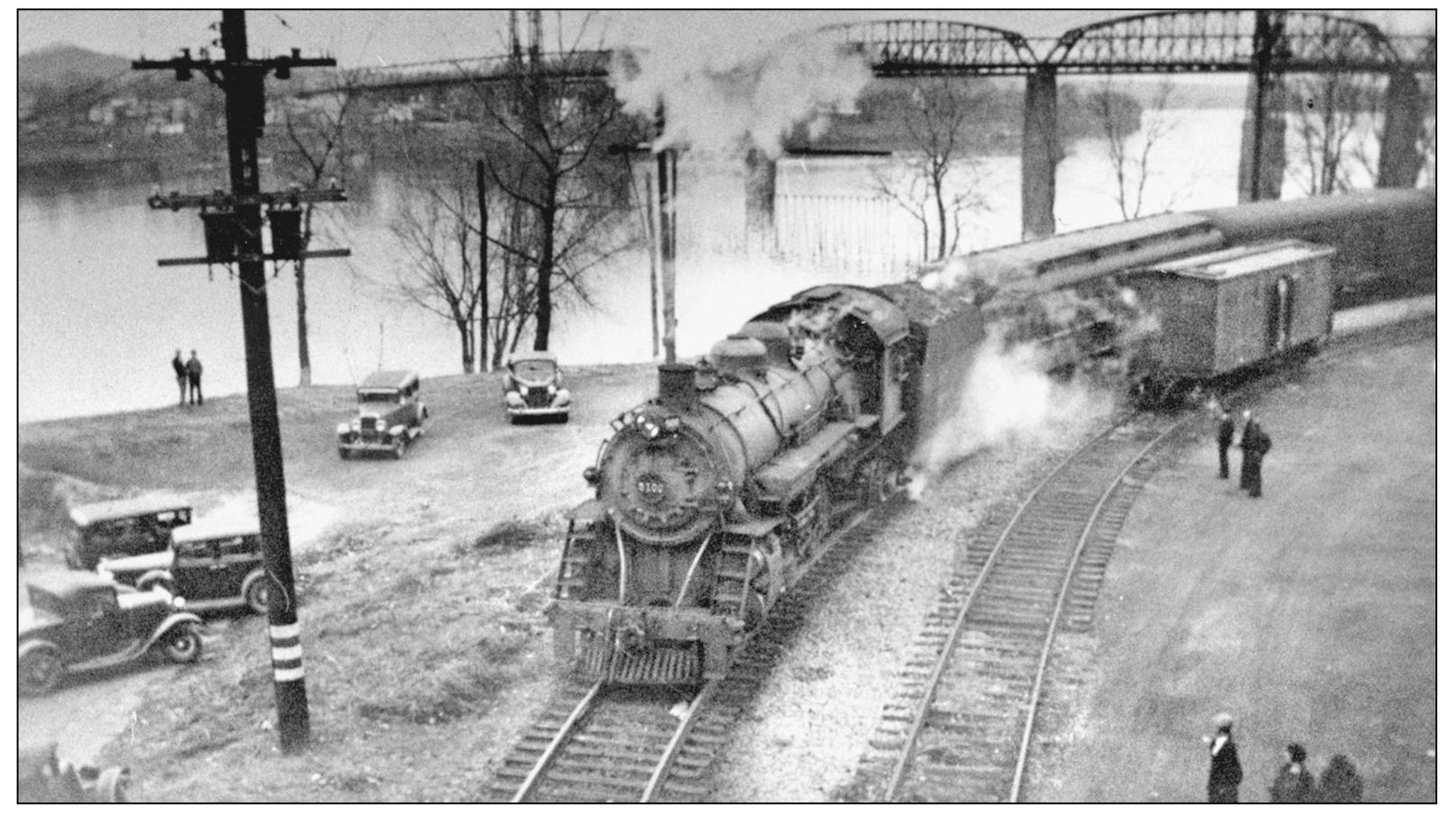
Here is another football special, this time from Weirton High School—via the Pennsylvania Railroad as far as Wheeling—in Parkersburg in 1934. The train has been unloaded on the elevated track at Ann Street Station (where the photographer is positioned) and is heading around the transfer track from the Low Yard to the High Yard for servicing. (Stephen P. Davidson/Bob Withers collection.)

President Truman campaigns for Adlai Stevenson in Parkersburg on Tuesday, September 2, 1952. Beside Truman on the rear of the armor-plated presidential private car Ferdinand Magellan is Secret Service agent Harry Nicholson. On the ground is Truman speechwriter Ken Hechler, who later served as a U.S. congressman and West Virginia secretary of state. Just before arriving in town, Truman asked Hechler to fetch him a Bible. The president found the passage in Matthew, chapter six, where Jesus denounces hypocrites’ prayers. Before a whistle-stop audience of 3,500, Truman compared the hypocrites to John Foster Dulles, Republican contender Dwight Eisenhower’s foreign policy adviser, who posed as a defender of the captive people in communist Eastern Europe. Truman then sent reporters to their dictionaries when he contended that the Republican “snollygosters” should read and be governed by the New Testament. He finally told them the word refers to “a pretentious, swaggering, prattling fellow.” (Ken Hechler/Bob Withers collection.)

Now it is Ike’s turn. The images on this page were taken during the World War II hero’s campaign stop in Huntington just before noon on Wednesday, September 24, 1952. Above, he disembarks from his private car to hobnob with several railroaders who obviously are delighted at being granted the impromptu meet and greet. While the candidate snags a few more votes outside, his wife, Mamie Doud Eisenhower, poses in the dining room of the private car with several local Republican women. The group includes, from left to right, Martha Ensign, Madeline Morris Regel, Shirley Stanard Swihart, Mamie Eisenhower, Betty Reckard King, and Nancy Robinson Fitzwater. (Both photographs Weirton Steel/Eisenhower Library collection.)
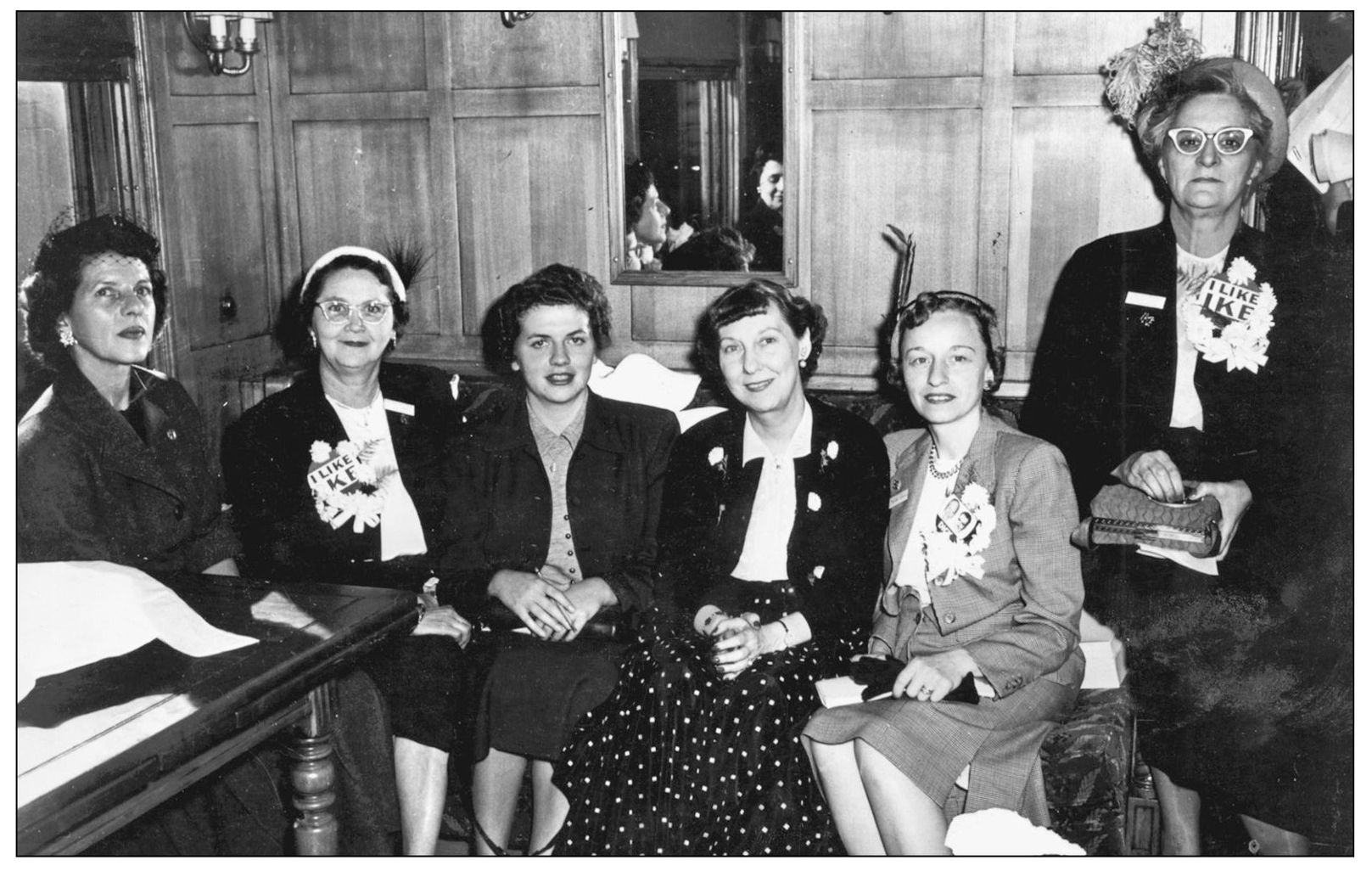

Later in the day, Eisenhower, above, makes a campaign speech while his train is stopped in the middle of St. Marys’ Second Street. Ike is heading for a historic meeting in Wheeling with his running mate, Richard Nixon, ostensibly to let him know whether he is still on the Republican ticket after revelations about Nixon’s “secret fund.” Unbeknownst to most, the deal already was struck when, earlier in the day, Ike and Sherman Adams, his chief of staff, left the train in Portsmouth, Ohio, huddled in a telephone booth, and talked to GOP officers in Cleveland. Below, Eisenhower, looking a bit bewildered and clutching a key to the city, makes his way through a crowd in the Wheeling station to a waiting limousine. (Above, Weirton Steel/Eisenhower Library; below, J.J. Young Jr./Bob Withers collection.)
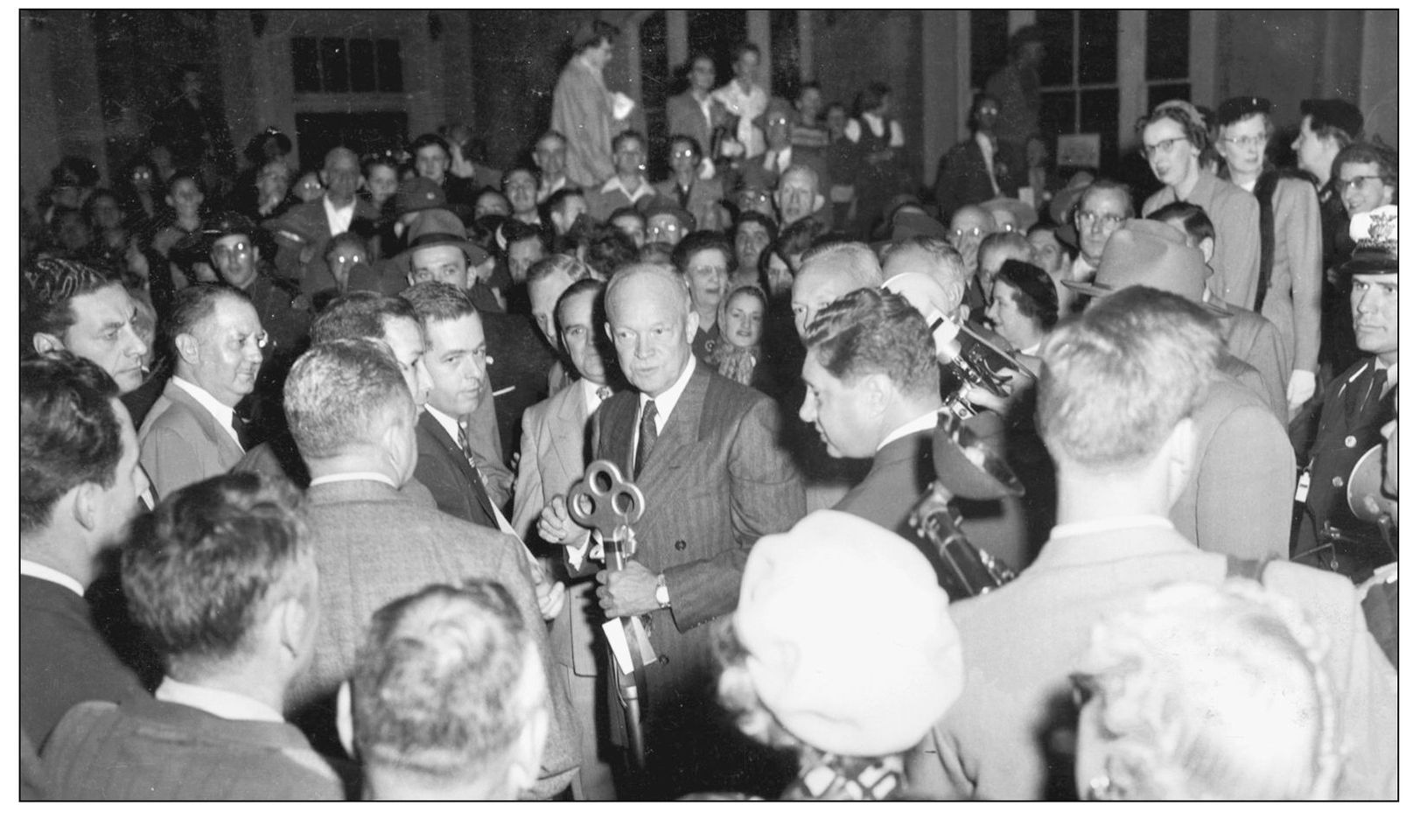
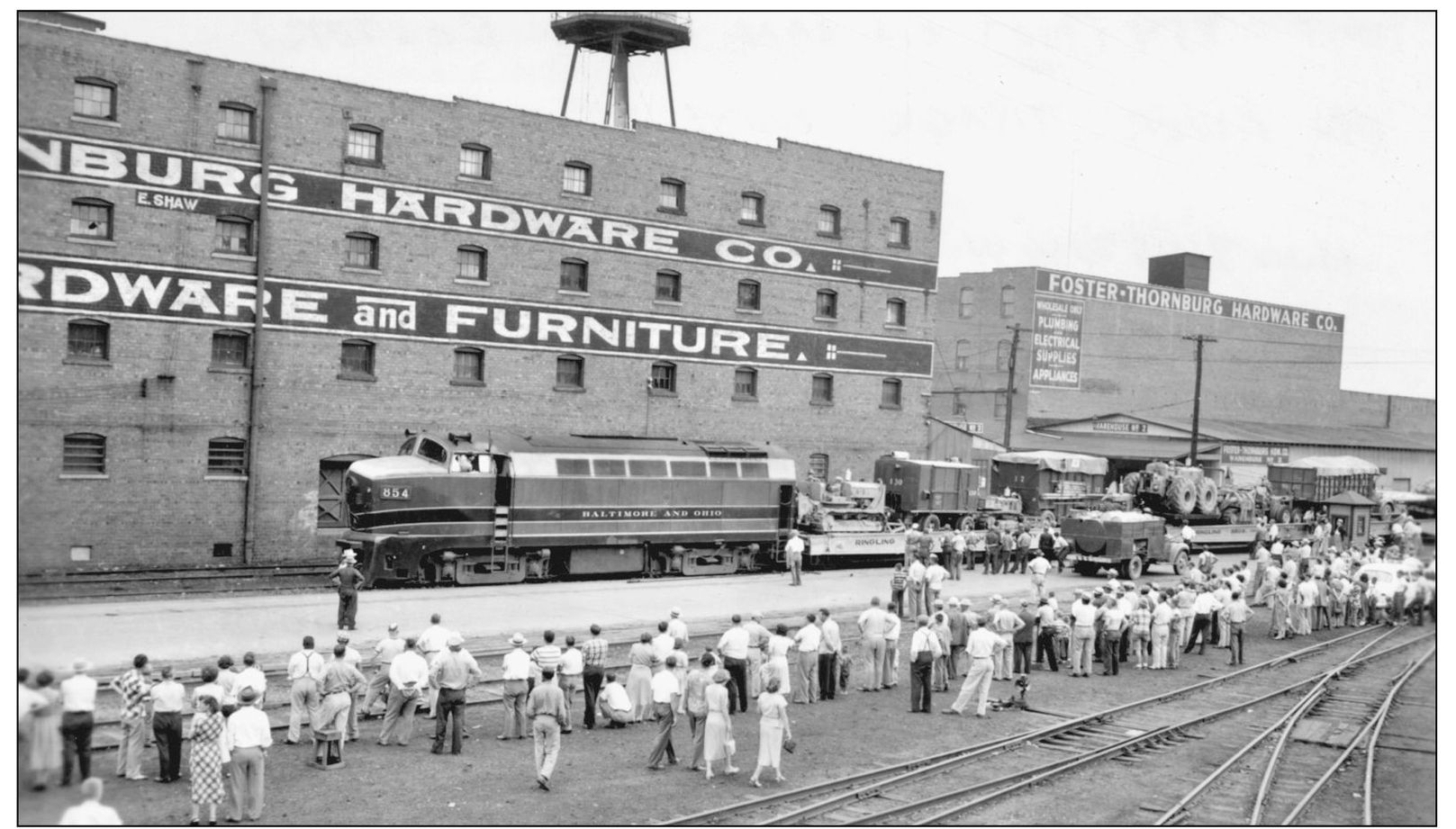
This special movement has drawn a crowd. It is a Ringling Brothers and Barnum and Bailey Circus train arriving in Huntington some time in 1951. Perhaps of lesser interest to the general public, the train also represents the arrival of the first B&O diesel-electric locomotive in Huntington. (Charles Lamley/Bob Withers collection.)

B&O officers and directors arrive in Huntington on Thursday, October 18, 1951, during their annual railroad inspection trip. From left to right, they include Stewart McDonald of Baltimore, John Traphagen and Lawrence Marshall of New York, J. Hamilton Cheston of Philadelphia, Richard Harte of Parkersburg, B&O president Roy B. White of Baltimore, John Biggers of Toledo, James Cunningham of Chicago, and Robert Garrett of Baltimore. (The Herald-Dispatch/Bob Withers collection.)
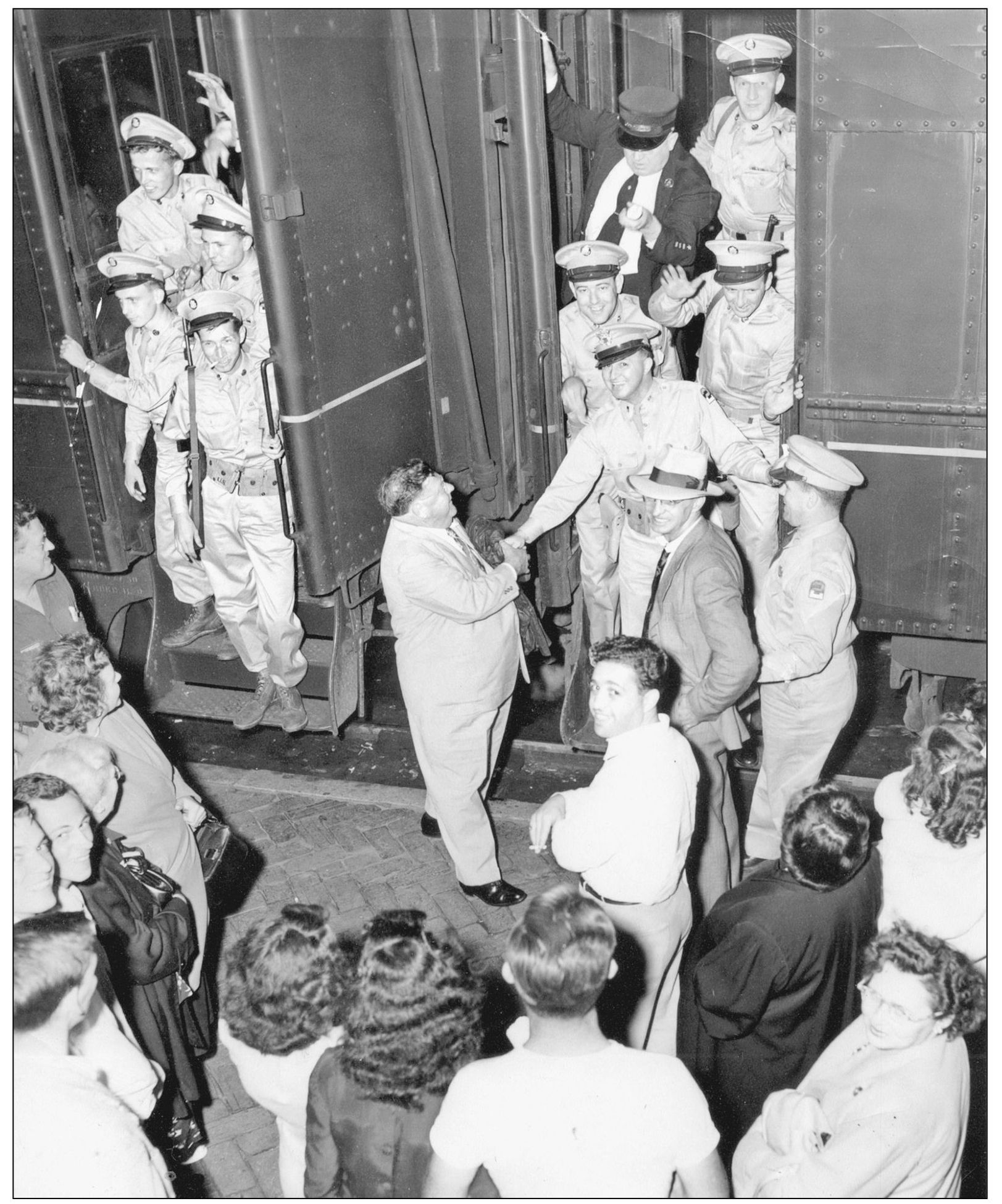
With a member of Train 78’s crew looking a bit impatient, Mayor Walter Payne bids goodbye to the U.S. Army Reserve’s 914th Postal Unit on Labor Day, September 4, 1950, before the men leave Huntington for Fort Meade, Maryland, to replace a unit that has been ordered to Korea. The 17 troops will squeeze into sections 6 through 11 of the regular 12-section drawing-room sleeper military style—that’s two men to a lower berth, except the commander, of course, and one to an upper—for the overnight journey to Pittsburgh. The next morning, the men will race across the Monongahela River bridge in the Steel City and catch a connecting train to Washington, D.C. The active duty call-up will nearly paralyze the Huntington post office and delay its deliveries—because that’s where they all work—until replacements can be trained. (Lawrence V. Cartmill/Bob Withers collection.)

The classic station and hotel are in the background at Grafton as a westbound troop train referred to only as MAIN 2805—Military Authorization Identification Number—departs with another load of troops headed for Korea. Thankfully a truce will be worked out in the three-year-old Korean War in about two months. (Philip R. Hastings/Classic Trains collection.)

Lota Frazier’s third-grade class boards Train 136 at Richwood in April 1954 for a ride down to their teacher’s home a mile and a half away for a near-the-end-of-the-school-year picnic. It looks like at least half of the combination passenger/baggage coach’s 48 seats will be filled, at least for a few minutes on this small segment of the train’s journey through the West Virginia hills. (Richwood News Leader/Bob Withers collection.)

The grim reaper has struck again. The body of a deceased person has come home for burial as personnel from the Altmeyer Funeral Home unload a coffin from Train 246’s express car after its arrival in Wheeling in the 1950s. In those days, the Railway Express Agency carried many folks to their final resting places. (J. J. Young Jr./Bob Withers collection.)

Chief clerk Ralph W. Brafford sizes up a 299,500-pound transformer mounted on a specially built depressed-center flatcar in Huntington on Wednesday, April 22, 1953. Later in the day, B&O will forward the special shipment to the Appalachian Power Company plant 65 miles up the Ohio River at Graham. (Charles Lemley/Bob Withers collection.)

Shriners load a vintage 1916 automobile onto an express car in the Wheeling terminal in August 1958. Later in the day, the express car will be part of an excursion taking the local Shriners to their annual convention in Kansas City. Shriners’ specials operated out of Wheeling for years. (J. J. Young Jr./Bob Withers collection.)

The expansive 1907 union depot at Point Pleasant has outlived its usefulness in 1960, and the B&O has purchased the old New York Central freight house to be its “new” station. Here, on Thursday, May 26, engineer Harry Nixon carefully eases the replacement structure—mounted on two flatcars—toward its new location facing the B&O main line. (Bob Withers collection.)

More than 350 business leaders, shippers, and other prominent citizens prepare for an unusual ride on Tuesday, May 12, 1959, sponsored by Huntington’s Railroad Community Committee and the Huntington and Ceredo-Kenova chambers of commerce to show them business opportunities along local rights-of-way. Above, they board B&O coaches in front of the passenger station; below, they find excellent observation posts in Norfolk and Western (N&W) freight gondolas. The tour will cover B&O territory, switch to the N&W in Kenova, and then take the C&O to Barboursville and back to Huntington. Douglas C. Turnbull Jr., a B&O vice president, will address the travelers later during a luncheon at the Hotel Prichard. (Charles Lemley/Bob Withers collection.)
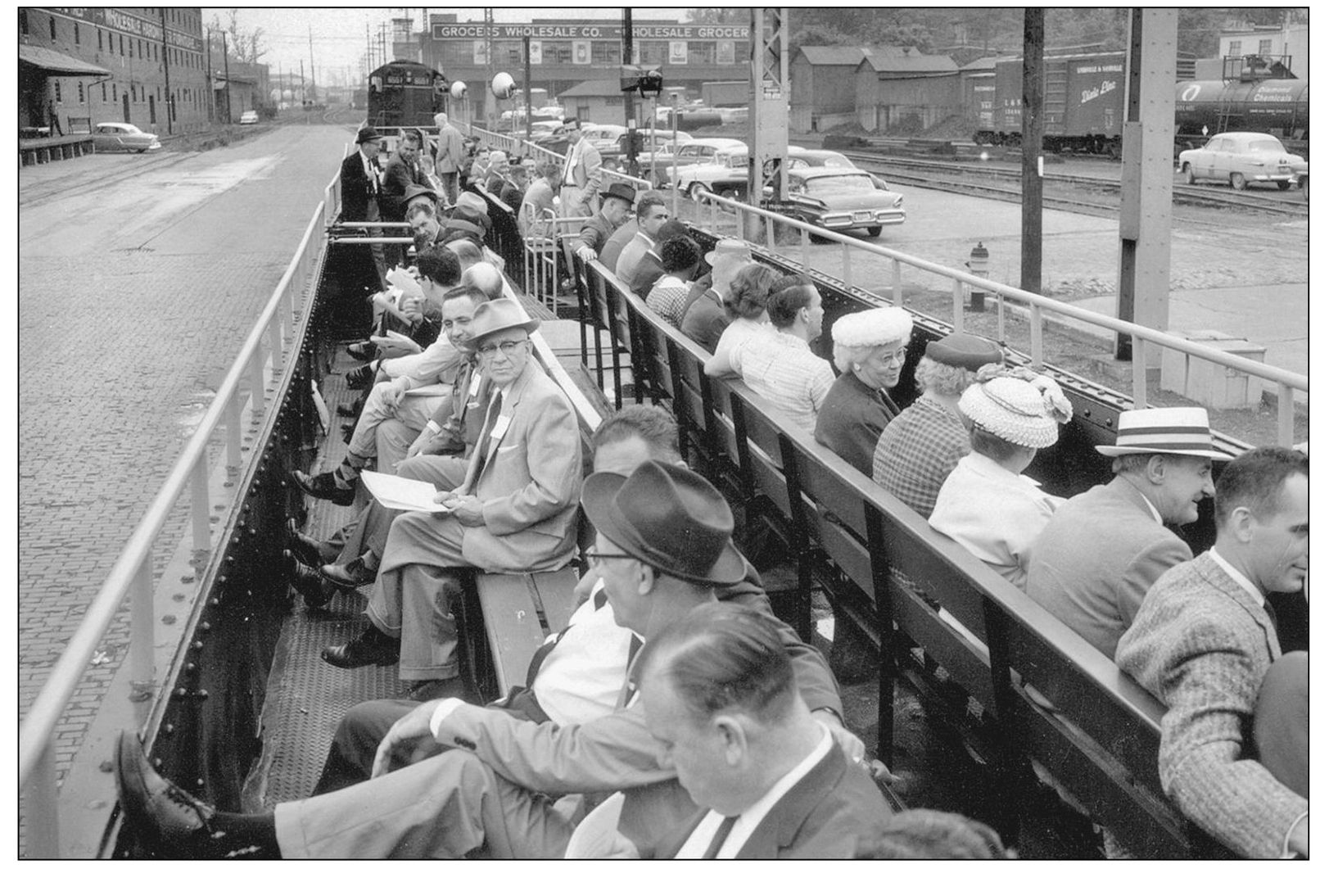

A lucky group of Boy Scouts—who, no doubt, are working on their railroad merit badges—are about to enjoy a caboose trip from Huntington to Kenova on Saturday, April 23, 1955. The man in the dark suit is chief clerk Ralph W. Brafford, who is acting as trip escort. The 8-mile trip became a favorite of local railroad enthusiasts after B&O combined the yard limits in the two cities and began shuttling all the freight between them with yard engines instead of through freight trains. Riders often saw small children run out to the right-of-way and shout “Chalk! Chalk!” as the trains approached; this stemmed from the congenial crews’ custom of throwing off dozens of fat pieces of chalk the company supplied to yard clerks to mark track assignments on the sides of incoming freight cars. (Charles Lemley/Bob Withers collection.)